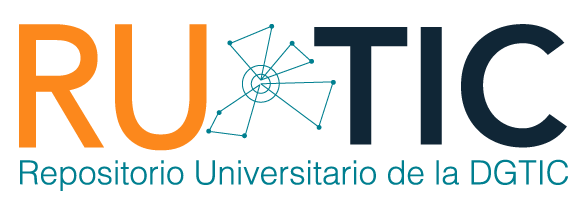| dc.contributor.editor | LIZBETH LUNA GONZÁLEZ | |
| dc.coverage.spatial | MX | |
| dc.date.accessioned | 2018-06-28T05:03:55Z | |
| dc.date.available | 2018-06-28T05:03:55Z | |
| dc.date.issued | 2013-07-01 | |
| dc.identifier.uri | https://ru.tic.unam.mx/handle/123456789/2146 | |
| dc.description | Tema del mes | |
| dc.description.abstract | El presente artículo muestra las diferentes concepciones del tiempo: desde la definición de la Real Academia Española hasta la teoría del tiempo de Einstein, pasando por la apreciación artística de Jaime Sabines y la precisa de Galileo, Aristóteles y Newton. El Sellado Digital de Tiempo es una buena alternativa para dejar evidencia tecnológica de cualquier “mensaje de datos” basándose en un sistema cliente-servidor. En especial para México el Sello Digital de Tiempo, en conjunto con la firma electrónica avanzada y el apoyo del gobierno, resolvería y apoyaría de forma inmediata temas tan trascendentes e importantes; si bien, ahora éstos sellos están reconocidos en la legislación comercial1 como un servicio de firma electrónica con la finalidad de que la iniciativa privada y el gobierno los utilice en actos de comercio (El artículo 75 del Código de Comercio, el cual es de aplicación federal, reputa como actos de comercio veinticinco tipos, queriendo resaltar que actualmente se utilizan en actos jurídicos inscribibles en el Registro Público de Comercio, constitución de empresas por medios electrónicos e inscripción de garantías mobiliarias), bien podrían aplicarse en el registro de patentes, control y seguimiento en temas de salud. El Sello Digital de Tiempo prácticamente podría ser implementado en todos los sectores de forma tan innovadora y creativa como pueda imaginarse. En una visión a corto y mediano plazo, no sólo serían beneficiadas todas las personas que realicen actos de comercio, sino todos aquellos que quieran ampararse mediante esta figura técnico-jurídica; si este es el caso, lo podrán hacer coadyuvando a la creación de un paradigma de “Sello Digital de Tiempo habla”, en vez de una cultura de “Papelito habla”. | es_MX |
| dc.description.abstract | This article shows the different ways of understanding time: spanning from the definition of time of the Spanish Royal Academy to Einstein’s the theory of relativity, to Jaime Sabines artistic treatment of time, to the precise way in which Galileo to describe this concept, as well as Aristotle and Newton views on time. Timestamping is a great alternative to create digital evidence of any "data message" based on a client-server system. In Mexico “Timestamps”, in conjunction with digital signatures (PKI - public-key infrastructure) and their respective government backing, can aid in steadfast resolution to important issues. Currently, timestamps are defined in Mexican commercial law as a digital signature service which could be employed for commercial transactions between the private sector and government (article 75 of the Commercial Code, which applies federal trade acts lists twenty five types of commercial acts, where legal acts before the Public Registry of Commerce, firm’s incorporation via electronic mediums, and sole registry of secured movable a bssets are included). Whereas timestamps are employed in legal processes such as in the Public Registry of Commerce, business incorporation and the registration of secured movable assets, processes such as patent registration and control and monitoring in health, to name a few, could also benefit from the use of timestamps. In the short to medium-term, not only would all entities engaged in acts of commerce benefit, but all those who want to defend themselves via the amparo using timestamp’s technical and legal foundations may do so. It is a matter of time before timestamps universal acceptance will give rise to the creation of a new paradigm of "Timestamp habla" instead of the commonly heard "El papelito habla (translation: the paper speaks, so nothing else is valid)”. | en |
| dc.format | html | |
| dc.format | application/pdf | |
| dc.format.extent | 3.3 MB | |
| dc.format.extent | 802 KB | |
| dc.language | spa | |
| dc.publisher | Universidad Nacional Autónoma de México. Dirección General de Cómputo y de Tecnologías de Información y Comunicación. Revista Digital Universitaria | |
| dc.relation.isformatof | http://www.revista.unam.mx/vol.14/num7/art20/art20.pdf | |
| dc.relation.ispartof | http://www.revista.unam.mx/index_jul13.html | |
| dc.rights | openAccess | |
| dc.source | Revista Digital Universitaria (1607 - 6079). Vol. 14, No. 7 (2013) | |
| dc.subject | Telecomunicaciones -- Aspectos sociales | |
| dc.subject | Comunicaciones digitales | |
| dc.title | El Sello Digital de Tiempo: Optimización de la tecnología aplicada al tiempo | es_MX |
| dc.title.alternative | Timestamping: optimization of technology applied to the time | en |
| dc.type | article | en |
| dc.contributor.director | AGUSTIN LOPEZ MUNGUIA CANALES | |
| dc.subject.keywords | Tiempo , Sello Digital de Tiempo, Firma electrónica, RFC3161, Confiabilidad, Certeza, Seguridad informática, Mensaje de datos, Innovación, Reloj atómico | |
| dc.identifier.url | http://www.revista.unam.mx/vol.14/num7/art20/ | |
| dc.creator | Israel Becerril Sierra | |
| dc.rights.url | http://creativecommons.org/licenses/by-nc-sa/4.0 |
Files in this item
This item appears in the following Collection(s)
COMPARTE
BÚSQUEDA
Escriba el texto a buscar en DSpace
CONTACTO
El Repositorio Universitario de la DGTIC se edita en la Dirección General de Cómputo y
de Tecnologías de Información y Comunicación (DGTIC), de la Universidad Nacional Autónoma de México (UNAM)
Circuito Exterior s/n, Ciudad Universitaria, Coyoacán, C.P. 04510, México, D.F
Tel: +(52) (55) 56228166 Email: rutic@unam.mx









 ¿Qué es un repositorio...?
¿Qué es un repositorio...? ¿Qué beneficios obtengo...?
¿Qué beneficios obtengo...? ¿Qué tipo de recursos...?
¿Qué tipo de recursos...? Preguntas frecuentes
Preguntas frecuentes